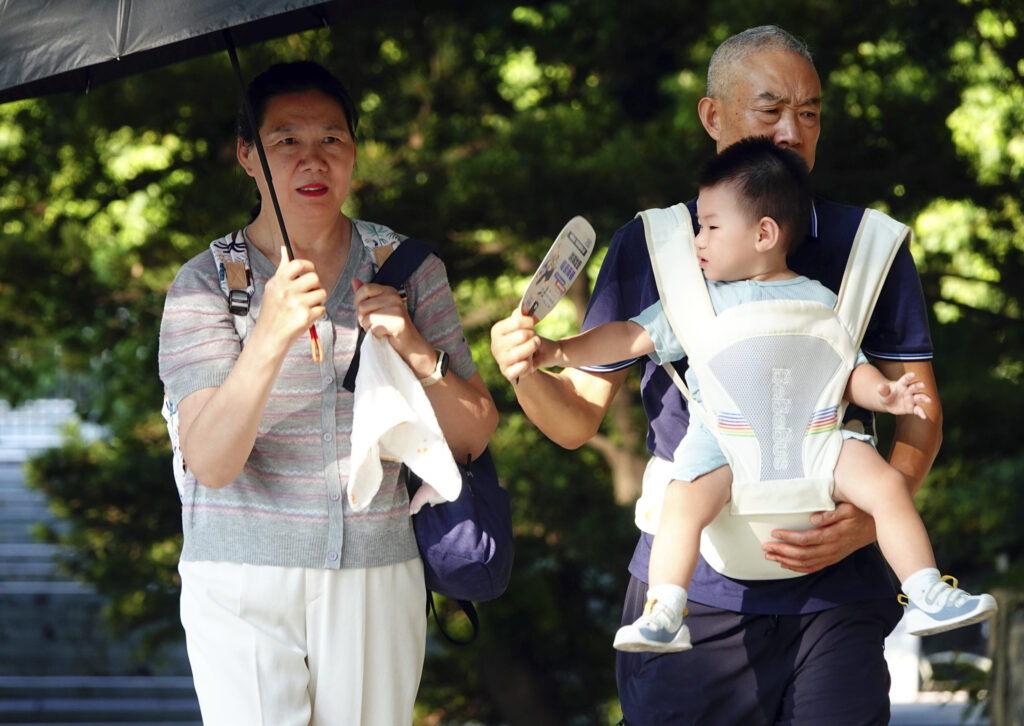China’s central government made waves this week over its plan to offer parents a cash subsidy of up to $1,500 per child.
The measure—the first of its kind to be applied nationwide—follows a flurry of government initiatives aimed at reversing the country’s declining birth rate.
But analysts remain skeptical this will be enough to encourage more births, with one study warning that the population, officially 1.41 billion, could reach levels not seen since World War II by the end of the century.
Newsweek reached out to the Chinese Foreign Ministry via email for comment.
China’s Population Dilemma
After seven years of decline, China’s total fertility rate in 2024 rose slightly to 1.2 births per woman, a modest uptick from the previous year that many demographers attribute to the end of Beijing’s strict pandemic lockdowns in late 2022.
Even so, China counted half as many births last year as in 2016, the year China ended its decades-old One Child Policy, and births in 2024 exceeded deaths for the third straight year.
Frequently cited factors include the rising cost of urban living, longer working hours, and changing attitudes toward marriage and child-rearing.
China’s leadership is eager to reverse the trend, as the soaring number of elderly citizens is expected to increase the burden on families and strain the country’s social welfare systems, sapping vitality from the world’s second-largest economy.
China’s Smallest Population Since World War II?
A report published in January by researchers at Southwestern University of Finance and Economics in Chengdu paints a sobering outlook for the future of the world’s second-largest population.
Even under the most optimistic scenario—assuming a total fertility rate (TFR) of 1.31—China’s population is projected to begin shrinking around 2030 and could fall to 590 million by 2100.
That’s nearly 200 million less than the United Nations’ World Population Prospects estimate for the same year.
A TFR of 2.1 is generally considered the replacement rate needed to maintain a stable population in the absence of significant immigration levels.
In the most extreme projection—a fertility rate of just 0.72—China’s population would plummet to 320 million by 2100, a 77 percent decrease and smaller than the current 340-million strong population of the United States.
The median-fertility scenario, based on a TFR of 1.05, roughly matching China’s estimated rate in 2023, would result in a decline to 460 million by the century’s end.
That would bring China’s population back to levels last seen near the end of World War II, which the researchers estimate was about 400 million.
The authors also examined how these projections will accelerate the pace of aging in China.
Those 65 and older comprised 15.6 percent last year, according to official statistics, as the country edges closer to joining the likes of Japan and South Korea as a super-aged society.
Even in the high-fertility scenario, the share of people aged 65 and over continues to climb until 2084, when it peaks at 36 percent. Under the low-fertility model, more than half the population (53 percent) would be 65 or older by 2091, according to the study.
National Childcare Subsidy
Desperation has driven local and central authorities to roll out a bevy of pro-natal measures from fertility treatments to tax breaks, so far to little effect.
The new cash subsidy stands out for its national scope and inclusion of firstborns, unlike most previous local subsidies, which have primarily benefited couples having a second or third child.
Xiujian Peng, a senior research fellow at Victoria University’s Centre of Policy Studies in Melbourne, called the plan “significant” and said it could motivate some people who were reluctant to become parents.
“Importantly, financially weaker provinces or cities—those unable to fund their own local incentives—will now receive support from the central government,” she told Newsweek. “This helps ensure that families across the country, regardless of location, receive at least some level of assistance.”
However, while the subsidy may move the needle for low-income and rural families, “it is likely too small to significantly influence childbearing decisions in high-cost urban areas,” Peng said.
Read the full article here

















